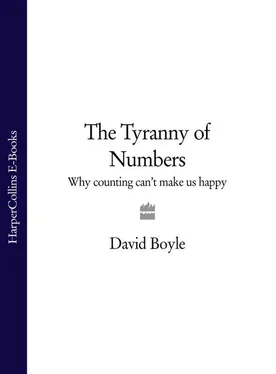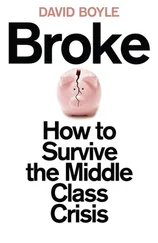But don’t blame me. I was plummeted into this frame of mind as a teenager when I came across a poem by D. J. Enright called ‘Blue Umbrellas’, which in a few short lines summed up the poverty of definitions:
The thing that makes a blue umbrella with its tail –
How do you call it? You ask. Poorly and pale
Comes my answer. For all I can call it is peacock.
Now that you go to school, you will learn how we call all sorts of things;
How we mar great works by our mean recital.
You will learn, for instance, that Head Monster is not the gentleman’s accepted title;
The blue-tailed eccentrics will be merely peacocks; the dead bird will no longer doze
Off till tomorrow’s lark, for the letter has killed him
The dictionary is opening, the gay umbrellas close.
Bizarre measurement No. 1
Guz
(Middle Eastern measurement of variable length. One Guz = 27 inches in Bombay, 37 inches in Bengal, 25 inches in Arabia and 41 inches in Iran.)
Americans who claim to have been abducted by aliens: 3.7 million
Speed of London traffic in 1900: 12 mph
Speed of London traffic in 1996: 12 mph
Average time US patients are allowed to speak before being interrupted by their doctors: 18 seconds
Chapter 1 A Short History of Counting
Know then thyself, presume not God to scan,
The proper study of mankind is man.
Alexander Pope
I have often admired the mystical way of Pythagoras, and the
secret magic of numbers
Sir Thomas Browne, Religio Medici
It was 12 September 1904. The Kaiser was on the throne, the Dreadnought was less than a few rivets on the ground and Freud was in his Vienna consulting rooms, thinking the unthinkable. In Berlin, the unthinkable seemed to be becoming real.
As many as 13 of the city’s greatest scientific minds were convinced. The leading psychologists, veterinary surgeons, physiologists – even the director of the Berlin Zoo – had come away from the demonstration shaking their heads, worrying slightly for their professional reputations. Yet they had just signed the paper: the horse they had spent the day watching was not responding to signals from its owner when it demonstrated its considerable mathematical powers. Clever Hans, in other words, was officially not a circus act. He really was clever.
Clever Hans sounds like the title of a Grimm fairy tale or one of Freud’s more spectacular patients. Actually he was a horse belonging to a retired maths teacher called Wilhelm von Ostein, who believed passionately in its ability to do complicated multiplication and division – even fractions – tapping out the answer with its hoof and manipulating sets of numbers up to six decimal places. What’s more, by converting his answers into numbers, Hans could also read, spell and identify musical tones. Zeros he communicated with a shake of the head.
Wearing a hard black hat over his streaming white hair and beard, von Ostein exhibited Hans in a northern suburb of the city every day at noon. He refused to take money for the show, rewarding Hans with a pile of bread and carrots for answering the questions of the daily audience who gathered around.
A leading biologist had become fascinated with the Hans phenomenon, and had invited the 13 eminent scientists – the so-called Hans Commission – to defend him and von Ostein from ridicule in the press. The commission recommended further study by a rising young psychologist, Oskar Pfungst. In the six weeks that followed, Pfungst had been severely bitten by Hans, von Ostein had withdrawn his horse in a rage, and (with a sigh of relief) modern science had cracked the mystery of the counting horse.
First of all, Pfungst noticed that Hans got excited if he could not see the questioner, and made strenuous efforts to see round his blindfold so that he could. They also found that the horse lost the arithmetical plot if he was asked questions that the questioners didn’t know the answer to themselves. Clearly he must be responding to some kind of unconscious signal from the person asking the questions. When the implications of the blindfold experiment sank in, von Ostein exploded with fury at Hans, but the following day he had regained his ardent belief and took the horse away.
It was too late. Pfungst’s report became a legend in experimental psychology. He argued, completely convincingly, that Hans was able to pick up the slight incline of the questioners’ heads when they had finished asking the question and expected the answer to be tapped out. When Hans had reached the right number of taps, he was able to notice the tiny relaxation, the minute straightening up or raised eyebrow with which the questioners betrayed themselves, and he stopped tapping. Hans also tapped faster when he knew it was a long answer (a practice that added to his intellectual reputation) and this too, said Pfungst, he was able to deduce from tiny changes of facial expression.
Pfungst’s own reputation was made, modern science had been vindicated – animals could not count. Von Ostein died a few months later. History does not relate what happened to Hans, but I’m not hopeful.
It was, of course, the dawn of the century of numbers. A hundred years later, we prove our humanity every time we open our newspapers with the mass of statistics on offer. Numbers are our servants, the tools of human domination. For centuries, counting was accepted as one of the key differences between human beings and animals. ‘Brutes cannot number, weigh and measure,’ said the great pioneer of quantification, the fifteenth-century cardinal Nicholas of Cusa. The arrival of a mathematical horse was a serious challenge to the numerical world view.
But 1904 was not just the year of Rolls-Royce and the entente cordiale , it was a moment of fantasy and wish-fulfilment. Peter Pan was on stage for the first time, British troops were taking the mysterious Tibetan city of Lhasa, and there was an absolute rash of ‘clever’ animals on offer, each one challenging the accepted view of numeracy as exclusively human. There was the English bulldog Kepler, owned by Sir William Huggins, which barked out its numerical answers. There was Clever Rosa, the so-called Mare of Berlin, and doyenne of the local music-hall stage. There was the clever dog of Utrecht, the reading pig of London, all forerunners of Babe in their own way. Pfungst despatched many of their reputations, but he was too old later to investigate Lady, the talking and for-tune-telling horse of Virginia.
Lady managed to count and tell fortunes by flipping up letters on a special chart. Pfungst’s biographer told the story of a colleague of his who had visited Lady to ask where his missing dog had gone. The horse spelled out the word DEAD. Actually, the dog turned up alive and well a few days later, and following Pfungst he gave his opinion – having studied Hans in such detail – that Lady had probably been able to sense the man’s conviction that the dog was dead.
So we can all breathe a sigh of relief – animals can’t count; numbers are safely human. But a century later, I still want to shake them all and say: ‘Hang on a minute!’ Here was a horse that was apparently able to read minds and spell correctly, never mind counting.
The accepted order of things is not absolutely safe, but we will never be able to set the clock back long enough to find out. Lady and Hans have long since gone to the knackers, and modern science is blind to strange phenomena like that. But the issue of counting and who is entitled to do so is still with us. Numbers have been in constant use for the past 6,000 years, but we have never quite resolved what they are. Are they intellectual tools for humans, invented by us for our own use? Or are they fantastical concepts, pre-existing in the universe before Adam, which we had to discover along with America and the laws of thermodynamics? Which came first: man or numbers? Are they available for any species to use or just an aspect of mankind? Are they real or human?
Читать дальше












